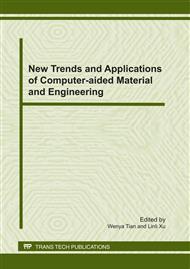p.230
p.236
p.241
p.246
p.251
p.256
p.261
p.266
p.271
Trusted Software Construction Model Based on Trust Shell
Abstract:
Due to not considering the guaranty of trustiness, traditional software development methods and techniques lack effective measures for ensuring trustiness. Combining agent technique with trusted computing provided by TPM, a trusted software construction model based on Trust Shell (TSCMTS) is demonstrated in this paper, where Trust Shell is responsible for ensuring the trustiness of software logically. In particular, for the purpose of improving the accuracy of trustiness constraints, a strategy of determining multiple attributes’ weights by information entropy for check point is proposed. Both simulation experiment results and practical application indicate that the TSCMTS is of effective trustiness and reasonable performance overhead.
Info:
Periodical:
Pages:
251-255
Citation:
Online since:
January 2011
Authors:
Price:
Сopyright:
© 2011 Trans Tech Publications Ltd. All Rights Reserved
Share:
Citation:


